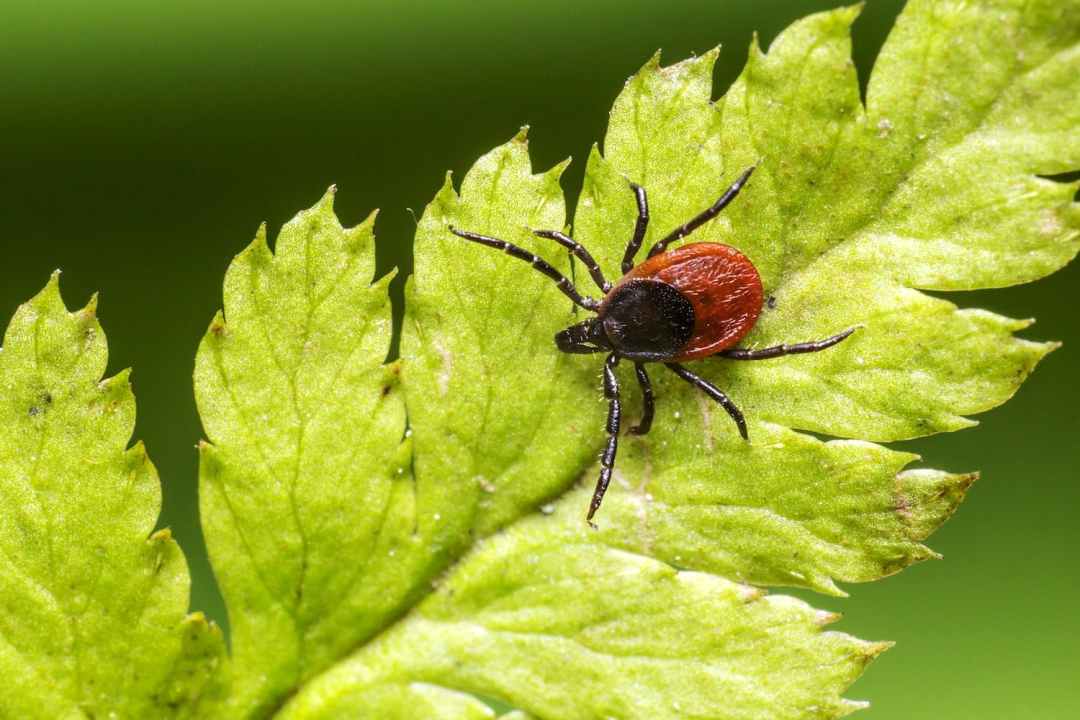Researchers can now predict where in Scotland you are most likely to encounter ticks that carry Borrelia burgdorferi, the bacterium that causes Lyme disease. If that wasn’t enough to make you reconsider those picnic plans, then they have also forecast that this risk will increase as global temperatures rise.
In a recent paper, the researchers predicted that people were more likely to come into contact with an infected tick in the months of August and September. They also identified both the Highlands and Tayside as areas of particular risk. Their map can be viewed in full here.
The study authors calculated that the density of infected ticks, a way of measuring Lyme disease risk, would double if temperatures increased by 1°C and become 11 times greater than current levels if temperatures climbed by 3°C.
Don’t we already know where the high-risk areas are?
Lyme disease is notoriously difficult to diagnose and it can be difficult to trace exactly when and in which geographical location a person was bitten by an infected tick.
Dr Sen Li, lead study author and researcher at Oxford University, says this is the first model of its kind to be applied to such a large region in Europe and a rare attempt to look at seasonal and geographical risk at the same time.
He says: ‘The current predictions of this model can provide useful decision-support information to the local public or public health officials for disease prevention.’
How reliable is this map?
Dr Li says the risk map was generated using our current understanding of the way Lyme disease is transmitted from ticks to humans and the most up-to-date climate and ecosystem data, but the predictions could change.
During the study the model was compared with tick survey data and correctly predicted how common infected ticks were in 22 out of 24 forest sites that had been surveyed.
The researchers do acknowledge that their calculations are limited by the lack of reliable data on certain aspects of Lyme disease transmission, for example the movement and density of deer which ticks also bite.
Dr Li adds: ‘Once better field data for model evaluation become available, we will further check and improve the model and its predictions.’
What is being done to protect the public?
In the last ten years the rate of Lyme disease has increased in England, Wales and Scotland, and although numbers in Scotland have levelled off in the last few years it is thought they are unlikely to go down.
Unfortunately, there is no easy way to remove ticks from the environment as they live in wooded and bushy areas which are plentiful in areas like the Highlands. So what can be done?
Professor Dominic Mellor, professor of epidemiology and veterinary public health at the University of Glasgow and veterinary consultant at Health Protection Scotland, explains: ‘We haven’t got a miracle cure, there isn’t a vaccine, so these are the same messages we were relying on ten years ago. I think that the important thing is that they are more widely known and more heeded.’
Health Protection Scotland has begun to gather interested parties across the country to tackle the problem. They aim to raise public awareness and investigate better ways of identifying and recording Lyme disease. They also hope to improve understanding of the disease among doctors, practice nurses and pharmacists so they know how to advise people who have symptoms or are worried about tick bites.
Should we try to avoid areas that are high-risk?
Prof Mellor says it is a matter of balance — health policy also encourages people to get outdoors for the sake of their physical and mental health.
‘I think that’s the right policy,’ he says. ‘Most [cases of Lyme] are avoidable if people take precautions.
‘It’s clear from the evidence and the research that if you do get bitten by ticks and remove them early it is very unlikely to transmit Borrelia to you.’
Prof Mellor suggests checking everybody in your party, particularly children, for bites.
He advises: ‘If a tick has attached then it should be removed as soon as possible. This is best done using one of the plastic tick removal devices that look like a small claw hammer or credit card and are sold by many outdoor stores, vets and pharmacies. It’s a good idea to have these devices in first aid kits, back packs and car glove boxes so that they are handy when needed.
‘Ticks can also be removed using fine-tipped tweezers parallel to the skin to lift the tick off, or, or as a last resort, fingernails can again be used to lift the tick off. Hold the tick close to the skin and pull steadily. It is important to try not to squeeze the body of the tick — so avoid heavier tweezers or blunt-nosed instruments.’







Comments